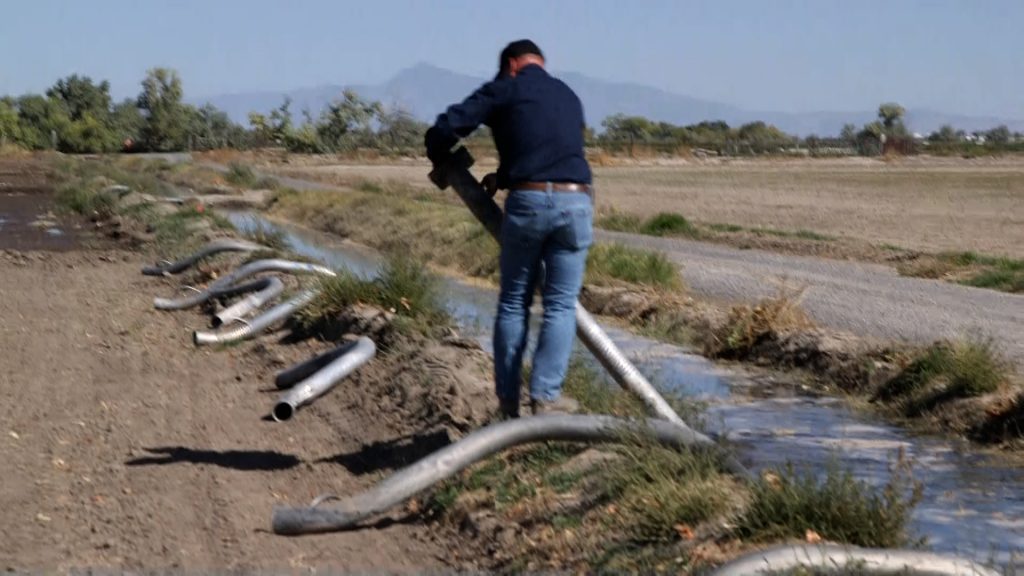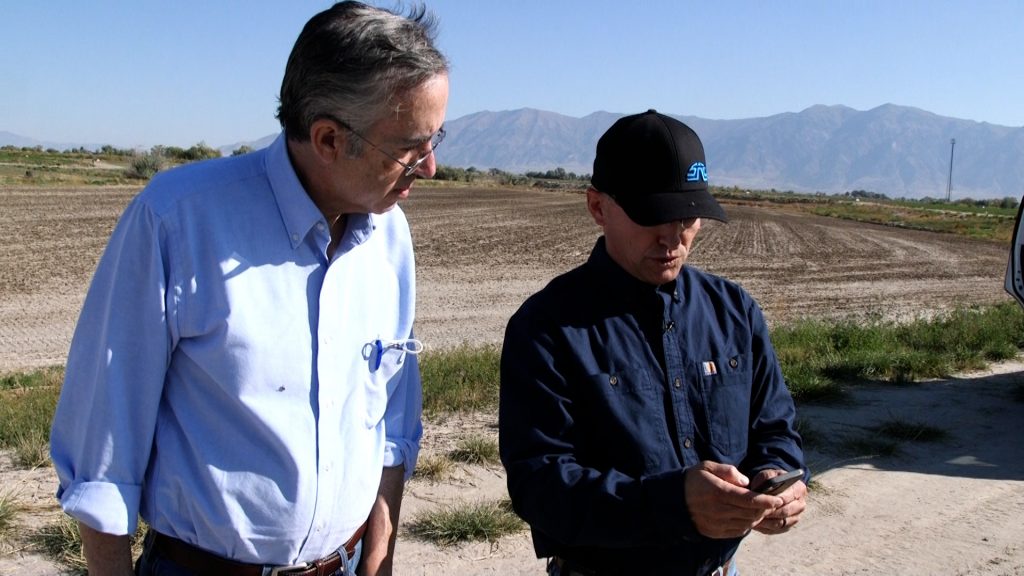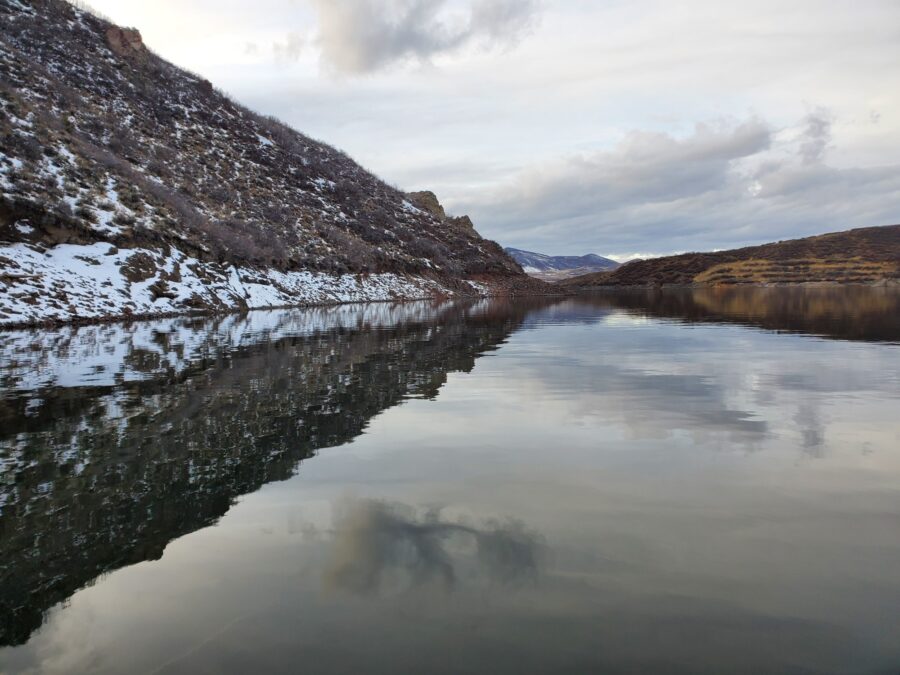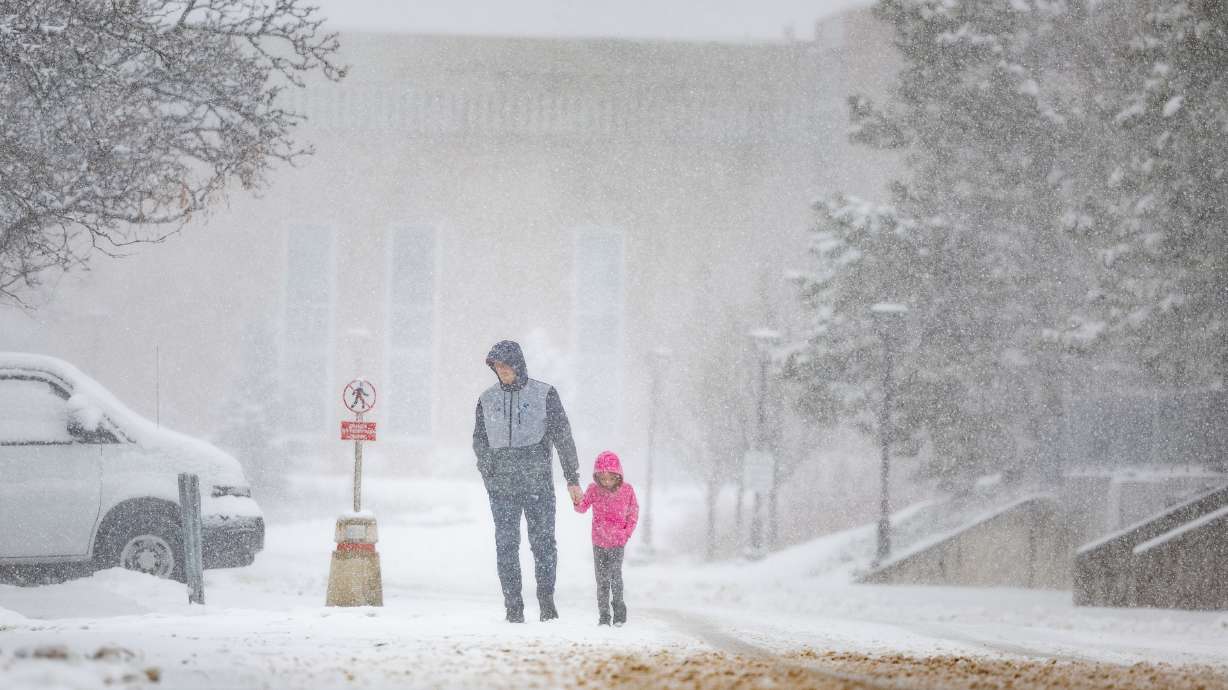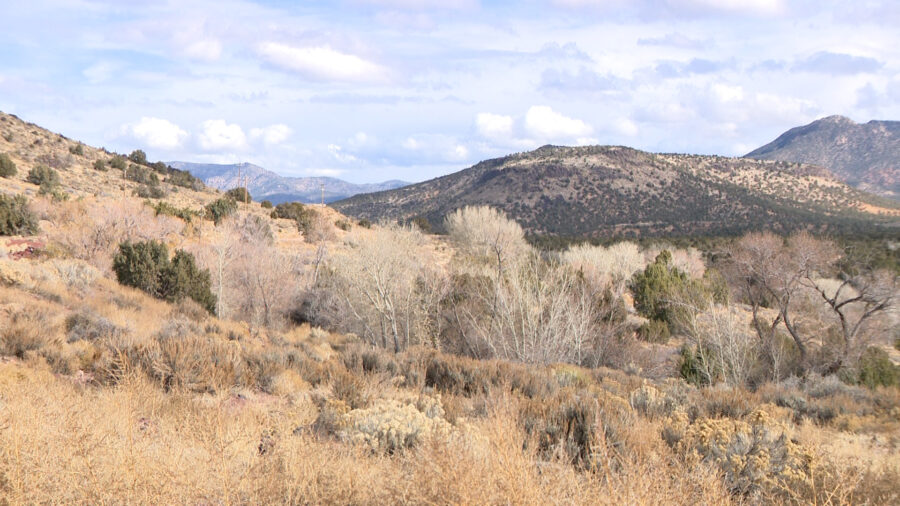Cities or farms: Who gets the water?
Oct 18, 2021, 11:44 PM | Updated: Oct 21, 2021, 9:27 pm
SALT LAKE CITY — A University of Utah economist says the state, which is trying to recover from severe drought, has enough water to deal with a growing population, if we just make some changes — difficult changes that probably won’t be popular with farmers.
Associate Professor Gabriel Lozada’s idea is to reallocate some water now used for agriculture.
According to a 2015 report, Utah residents use about twelve percent of the state’s water supply – about a third of that for indoor use and two-thirds for outdoor irrigation.
Meanwhile, agriculture, which the Utah Department of Agriculture and Food says accounts for two percent of the state’s economy, uses about three-fourths of the water supply, according to the Utah Division of Water Resources.
Lozada – using figures from the US Department of Agriculture – calculated that most of that water is used to grow hay.
Ryan Larsen, USU extension economist, says 27 percent of that hay is shipped overseas.
According to Lozada’s calculations, if Utah reallocated the water that’s used to grow hay for residential use, the state, which now has a population of 3.3 million, would, on paper, have enough water for 20 million people.
If all residents stopped watering their lawns and yards, there would be enough water for 60 million people.
He suggests the state could pay farmers not to grow hay.
“If you diverted a small percentage of Utah’s agricultural water to urban areas, Utah’s population could increase quite a bit,” said Lozada.
He said that, of course, infrastructure would need to be built, and water laws and regulations would need to be rewritten to make this happen.
Right now, Utah is moving ahead with the controversial proposed Lake Powell Pipeline, designed to water a growing Washington County and Bear River Development Project in the northern end of the state.
Farmer Clay Carter agreed the status quo isn’t sustainable, but says the answer is increased efficiency on the part of both cities and agriculture.
Carter looks at the problem both as a farmer — he grew up on a Box Elder County farm and returned to his roots a few years ago — and as an engineer.
At his day job, he runs a Logan automation company — Specialized Analysis Engineering.
Carter grew up irrigating crops with inefficient dirt canals and metal syphons.
A lot of water is lost as it soaks into the dirt in the canal, and a lot is lost because of overwatering.
A farmer is busy and can’t turn off the syphons at just the right time. So, Carter built an automated “surge” system for his alfalfa fields.
He runs it from his smart phone.
Remote-controlled water valves flood different sections of a field, which has been precisely leveled. As each section is flooded, sediment seals the dirt. The next time a valve is opened, the water flows past that section and waters the next.
He’s still testing the system, but, so far, he said he’s grown 50% more hay with 25% less water.
Like other farmers, his water allocation was cut back over the summer.
“There’s enough water in this state to accommodate all of the interests if we would quit wasting it,” he said.
Tony Richards, resource coordinator with the Utah Department of Agriculture and Food, said farmers “are the original conservationists. They do not want to use more water than they have to,” but they may be reticent to upgrade irrigation equipment because of the expense, and because of their use-it-or-lose-it water rights.
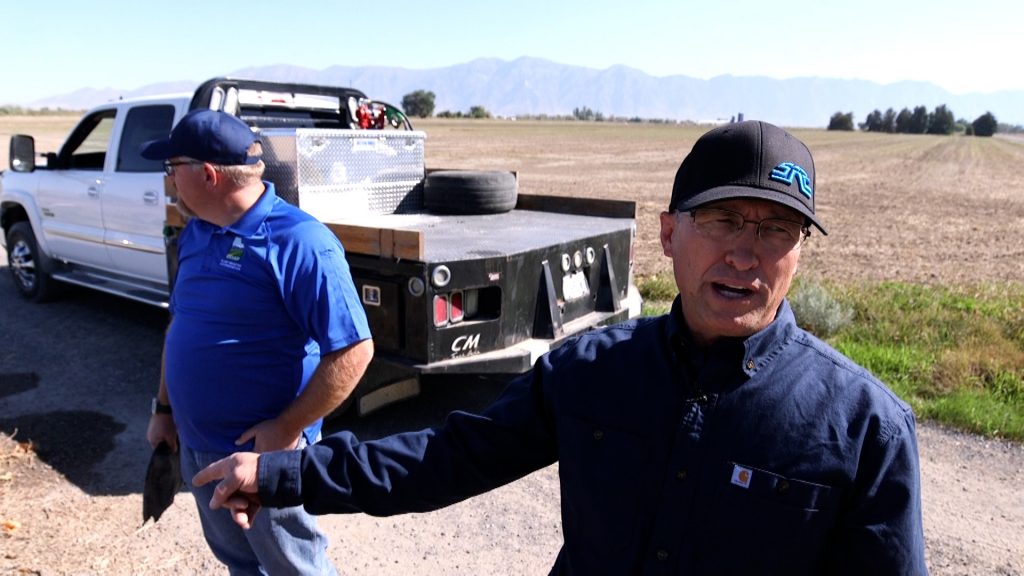
Farmer Clay Carter with Tony Richards, resource coordinator with the Utah Department of Agriculture and Food.
In theory, if a farmer uses less than his or her allotment, they could lose their water rights.
“You can’t bury your head in the sand,” he said. “Ag does need to get more efficient. We need to be able to give farmers an incentive, to allow them to make a change and protect their livelihood. I mean, that’s what we’re literally talking about. When we talk water, there are people’s livelihoods that depend on it.”
Farmers need more flexibility, he said, and that’s why the legislature approved a pilot water banking project. Farmers can temporarily transfer a portion of their allotments.
Carter said he returned to the farming life, on a part-time basis, because of a value that can’t be measured.
“Keeping roots in the ground, so to speak, is something that is a value,” he said. “Why would we want to give up a resource that is here if we can’t demonstrate that there is considerable reason to give it up?”
Zachary Frankel with the Utah Rivers Council, a nonprofit that works to protect river ecosystems, said instead of trying to reallocate agricultural water, Utah should look for ways to decrease outdoor residential use.
That, he said, would yield quicker results.
“Just because you see waste, that doesn’t mean it’s economically advantageous” to try to address it, he said.
A big part of the problem, he said, is the price of water. Utah’s rates are subsidized with property taxes, so water is cheap and the amount used per capita is the highest.
“You put economic rationality, together with an irrational pricing system, and you get bad outcomes,” said Lozada.
Lozada said the real threat to Utah’s water supply isn’t population growth, but global warming.
The state’s proposed water plan includes a 10% drop in supply and a 10% increase in a measure of how much water plants lose into the atmosphere over the next 50 years.
Frankel says he thinks that is too optimistic.
The Colorado River, which supplies some of Utah’s water, has dropped 20/5 in as many years from the 20th century average.
“Leaving the situation with water in Utah, the way it is right now, is not an option,” he said. “We can’t stop climate change.”



